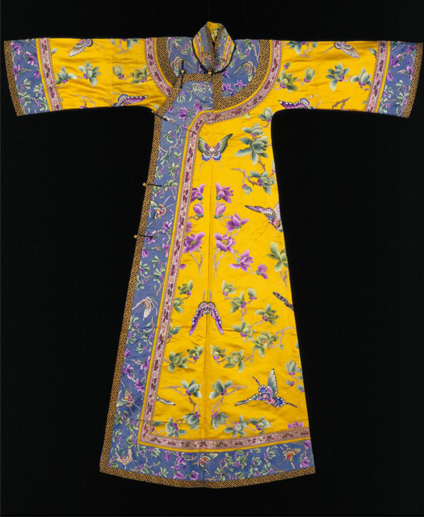"Chinese Imperial Robes" at the V & A. By Andrew Graham-Dixon.
Entering the Forbidden City from its southern end, by the Meridian Gate, the honoured visitor would proceed from the Outer Palace to the Hall of Supreme Harmony, then to the Hall of Central Harmony, and from there, onwards, to the Hall of Preserving Harmony. To the west he might glimpse the Hall of Mental Cultivation, and beyond that the Palace of Compassion and Tranquillity, where favoured elderly imperial concubines might hope to spend their last years of life in untroubled contemplation. If he were fortunate enough to have been summoned by the emperor himself, he would be allowed to pass through the Doorway of Heavenly Purity, leading to the three halls of the Inner Palace: the Palace of Heavenly Purity, the Hall of Union and the Palace of Earthly Tranquillity. In these precincts, at auspicious times of the year such as the Winter Solstice or Autumnal Equinox, the emperor would offer sacrifices to Heaven on behalf of all the people of China. The rituals were arcane and demanding. The fate of the nation was held to depend on the precise and meticulous observation of their many, complicated forms. The honoured visitor might be allowed to witness such events, but not expected to understand their subtler manifestations – no more than a concubine of the third rank, tottering in her silken platform heels, might be expected to understand the intricacies of an imperial hunting expedition or troop inspection.
The world of old imperial China can still be visited today, but only in the imagination. "Imperial Chinese Robes from the Forbidden City" is a hauntingly beautiful and compellingly evocative exhibition, thronged with the ghosts of a vanished world. The objects of display are nothing more than the clothes once worn by...


